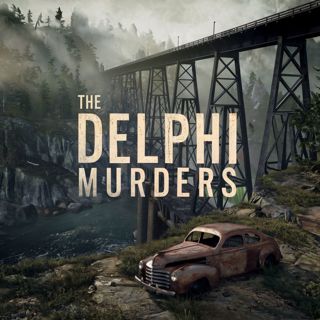
Anna Kepner Died on a Cruise — After a Lifetime of Being Failed by Family
Eighteen-year-old Anna Kepner was found dead aboard the Carnival Horizon — concealed under a bed, wrapped in a blanket, partially covered with life vests. But as shocking as those details are, the real story of this case goes far beyond a single cabin on a cruise ship. In this extended deep dive, we unravel the complicated, chaotic, and emotionally explosive family dynamics surrounding Anna — a young woman caught between two deeply fractured households, each carrying years of turmoil long before the tragic events at sea. Anna’s biological mother, Heather, took to TikTok in a raw, unfiltered emotional video, speaking openly about addiction, depression, distance from her children, and her years-long struggle to maintain a relationship with Anna. Meanwhile, Anna’s grandmother and uncle publicly accuse members of the paternal household of withholding the truth. Her ex-boyfriend claims Anna was afraid of a stepsibling. And that stepsibling — a 16-year-old boy — is now described by major outlets as a suspect. The stepmother has invoked her Fifth Amendment rights. Custody filings are unraveling. The family is splintering in real time. And the father at the center of all three marriages remains nearly silent. This is not a simple story. It is not a clean tragedy. It is a case where every branch of Anna’s family tree is cracking under the weight of years of conflict, unresolved trauma, and allegations made publicly by family and friends who say she was never truly safe. Tonight, we look at the family chaos that shaped Anna’s life, the voices now shouting from every side, and the patterns investigators are forced to sift through as they work to uncover what really happened on that cruise ship. This is the full picture — the story behind the story. #HiddenKillers #AnnaKepner #CarnivalCruise #TrueCrime #TonyBrueski #Investigation #FamilyDynamics #FBI #CruiseShipDeath #MaritimeCrime #Stepfamily Want to comment and watch this podcast as a video? Check out our YouTube Channel. https://www.youtube.com/@hiddenkillerspod Instagram https://www.instagram.com/hiddenkillerspod/ Facebook https://www.facebook.com/hiddenkillerspod/ Tik-Tok https://www.tiktok.com/@hiddenkillerspod X Twitter https://x.com/tonybpod Listen Ad-Free On Apple Podcasts Here: https://podcasts.apple.com/us/podcast/true-crime-today-premium-plus-ad-free-advance-episode/id1705422872
24 Nov 19min

Did WSU Miss the Bryan Kohberger Red Flags? Ret FBI Robin Dreeke Explains
Tonight on Hidden Killers Live, we’re cutting straight through the fog that has surrounded Washington State University’s handling of Bryan Kohberger’s behavioral complaints — and we’re doing it with retired FBI Special Agent Robin Dreeke, one of the most respected behavioral experts in the country. This isn’t about blaming people who didn’t have a crystal ball. This is about understanding what behavioral red flags actually are. Before a single crime is committed, before there’s a police report, before anyone can articulate what’s wrong — humans pick up patterns. They feel unsafe. They sense boundary-violating behavior. They feel instincts firing long before the conscious mind can put language to it. And that’s not “overreacting.” It’s evolution. WSU had multiple complaints, private warnings between women, faculty concerns, documentation, meetings, and a mandatory behavioral intervention. Yet the university treated it all like an HR issue instead of a threat-assessment problem. Tonight, Robin breaks down why that distinction matters — and how institutions all over the country make this same mistake. We explore why academia is uniquely vulnerable to minimizing threat indicators, why “but he’s never been violent” is a meaningless metric when evaluating patterned behavior, and why institutions often freeze instead of act. Stacy brings in insights from The Gift of Fear, examining the neuroscience behind the “gut feeling” that so many women reported. And then we tackle the paradox: how do you protect a community when the person at the center hasn’t committed a crime? Where’s the line between rights and risk? And what should universities be trained to recognize that they currently aren’t? This is one of the most important conversations we’ve had — not about predicting crime, but about seeing what institutions are terrified to acknowledge. Subscribe for more deep-dive analysis — only on Hidden Killers. #HiddenKillers #RobinDreeke #WSU #BryanKohberger #BehavioralAnalysis #ThreatAssessment #CampusSafety #TrueCrimeLive #TonyBrueski #RedFlags Want to comment and watch this podcast as a video? Check out our YouTube Channel. https://www.youtube.com/@hiddenkillerspod Instagram https://www.instagram.com/hiddenkillerspod/ Facebook https://www.facebook.com/hiddenkillerspod/ Tik-Tok https://www.tiktok.com/@hiddenkillerspod X Twitter https://x.com/tonybpod Listen Ad-Free On Apple Podcasts Here: https://podcasts.apple.com/us/podcast/true-crime-today-premium-plus-ad-free-advance-episode/id1705422872
24 Nov 24min

Inside Stephen Smith’s Death — Beyond the Murdaugh Rumors
The death of 19-year-old nursing student Stephen Smith has haunted South Carolina for nearly a decade — but with new national attention from the Hulu Murdaugh series, the truth about what happened to him is finally back in the spotlight. In tonight’s Hidden Killers deep-dive, Tony Brueski breaks down the real story behind the case: the strange crime scene, the contradictions in early investigative reports, the forensic inconsistencies that never should’ve been ignored, and the long-buried leads that investigators are only now pursuing. We walk through Stephen’s final night, the discovery of his body on a remote rural road, and the major red flags that made troopers question the hit-and-run narrative from day one. We also address — directly and responsibly — the long-circulating rumors involving the Murdaugh name, explaining what was speculation, what investigators actually found, and why SLED says there is no evidence tying the family to Stephen’s death. More importantly, we highlight the real investigative leads resurfacing today: individuals who made suspicious statements in 2015, inconsistencies in witness accounts, and the newly reclassified finding that Stephen’s death was a homicide, not an accident. With a grand jury working behind the scenes and national pressure mounting, the case is closer to answers than it has ever been. Stephen Smith was more than a rumor in a small Southern county. He was a son, a brother, a friend — a teenager with dreams of becoming a nurse — and someone out there knows exactly what happened to him. If you’re here for real reporting, grounded analysis, and a breakdown that cuts through the noise, you’re in the right place. Subscribe for continuing coverage of the Stephen Smith investigation, Murdaugh updates, and the biggest cases shaping the true-crime world today. #StephenSmith #MurdaughCase #TrueCrime #HiddenKillers #JusticeForStephen #SouthCarolinaCrime #ColdCase #Investigation #TonyBrueski #TrueCrimeCommunity Want to comment and watch this podcast as a video? Check out our YouTube Channel. https://www.youtube.com/@hiddenkillerspod Instagram https://www.instagram.com/hiddenkillerspod/ Facebook https://www.facebook.com/hiddenkillerspod/ Tik-Tok https://www.tiktok.com/@hiddenkillerspod X Twitter https://x.com/tonybpod Listen Ad-Free On Apple Podcasts Here: https://podcasts.apple.com/us/podcast/true-crime-today-premium-plus-ad-free-advance-episode/id1705422872
24 Nov 15min

Why Institutions Freeze — Ret FBI Robin Dreeke on Bryan Kohberger's WSU Red Flags
Tonight on Hidden Killers Live, we’re taking on the uncomfortable truth institutions hate facing: sometimes the danger is right in front of them, but the structure, culture, and psychology of the environment keep anyone from calling it what it is. Retired FBI Special Agent Robin Dreeke joins us to break down how those blind spots cost Washington State University crucial opportunities to intervene. This episode digs into the behavioral complaints that circulated inside WSU long before any crime occurred: the staring, the hovering, the boundary-breaking, the fear expressed by women in the department. These weren’t isolated incidents. They were a pattern. And patterns matter. Robin explains why institutions tend to frame patterned discomfort as a paperwork problem instead of a risk-behavior problem — and why that distinction is everything. Graduate programs rely heavily on autonomy, hierarchy, and informal power dynamics. When the person generating concern holds influence over students, especially women, the risk isn’t hypothetical. It’s structural. We examine why institutions minimize threat signals: fear of liability, fear of mislabeling someone, fear of overreacting, fear of confronting what they don’t want to acknowledge. Stacy joins with psychological insight into why women's instincts responded before anyone had the “official language” to describe what was wrong. Then we explore what was missing at WSU — not actions, but training. Why were faculty unprepared to identify patterned risk? Why did warnings get siloed instead of escalated? Why did a mandatory meeting produce no meaningful change? And what could have been done differently from the moment the first complaints surfaced? This isn’t about hindsight. It’s about understanding systemic blind spots so they aren’t repeated. For anyone trying to understand the line between unusual behavior and genuine threat, this conversation is a must-watch. #HiddenKillers #WSU #RobinDreeke #ThreatAssessment #CampusWarnings #BehavioralPatterns #TrueCrimeLivestream #TonyBrueski #RedFlags #InstitutionalFailure Want to comment and watch this podcast as a video? Check out our YouTube Channel. https://www.youtube.com/@hiddenkillerspod Instagram https://www.instagram.com/hiddenkillerspod/ Facebook https://www.facebook.com/hiddenkillerspod/ Tik-Tok https://www.tiktok.com/@hiddenkillerspod X Twitter https://x.com/tonybpod Listen Ad-Free On Apple Podcasts Here: https://podcasts.apple.com/us/podcast/true-crime-today-premium-plus-ad-free-advance-episode/id1705422872
24 Nov 49min

Holeman’s Testimony EXPOSES How Badly Delphi Was Investigated-WEEK IN REVIEW
In today’s episode, we take a hard, relentless look at Lieutenant Jerry Holeman’s testimony in the Delphi murders case — and what it reveals about the investigation that led to the conviction of Richard Allen. This isn’t speculation. This isn’t rumor. This is straight from the sworn record: the contradictions, the assumptions, the missing analysis, and the investigative gaps that no one watching the press conferences ever got to see. Holeman was positioned as one of the state’s anchors — a senior Indiana State Police investigator expected to bring clarity and confidence to a deeply complex double-homicide case. Instead, his testimony exposes just how shaky the investigative foundation really was. Sticks placed on the bodies of Abby and Libby were dismissed as “camouflage,” even though they concealed nothing. Then, suddenly, the state floated a psychological term — “undoing” — that had never appeared in the investigative record, and Holman endorsed it without hesitation. His certainty about a “single offender” wasn’t based on forensic proof. It came from a belief he stated on the stand: that in multi-offender crimes, “someone usually talks.” Yet the case file contains exactly that — a suspect making disturbing comments investigators inexplicably labeled “no further action.” We dive into everything Holman didn’t explain: why symbolic elements were barely analyzed, why alternative suspects weren’t vetted, why forensic opportunities were missed, why the bullet lacked field documentation, why major investigative questions were replaced with assumptions, and why his testimony often stood in open conflict with other investigators on essential questions like the FBI’s role. This isn’t about guilt or innocence. It’s about whether the investigation that shaped the entire Delphi narrative was thorough, consistent, or grounded in evidence. And Holman’s testimony makes it undeniably clear: the holes aren’t small. They’re foundational. If you care about the truth in Delphi, this breakdown matters. #Delphi #DelphiCase #TrueCrime #RichardAllen #InvestigativeAnalysis #HolemanTestimony #CourtRecord #JusticeSystem #HiddenKillers #TrueCrimeCommunity Want to comment and watch this podcast as a video? Check out our YouTube Channel. https://www.youtube.com/@hiddenkillerspod Instagram https://www.instagram.com/hiddenkillerspod/ Facebook https://www.facebook.com/hiddenkillerspod/ Tik-Tok https://www.tiktok.com/@hiddenkillerspod X Twitter https://x.com/tonybpod Listen Ad-Free On Apple Podcasts Here: https://podcasts.apple.com/us/podcast/true-crime-today-premium-plus-ad-free-advance-episode/id1705422872
23 Nov 19min

Why Institutions Freeze — Ret FBI Robin Dreeke on Bryan Kohberger's WSU Red Flags-WEEK IN REVIEW
Tonight on Hidden Killers Live, we’re taking on the uncomfortable truth institutions hate facing: sometimes the danger is right in front of them, but the structure, culture, and psychology of the environment keep anyone from calling it what it is. Retired FBI Special Agent Robin Dreeke joins us to break down how those blind spots cost Washington State University crucial opportunities to intervene. This episode digs into the behavioral complaints that circulated inside WSU long before any crime occurred: the staring, the hovering, the boundary-breaking, the fear expressed by women in the department. These weren’t isolated incidents. They were a pattern. And patterns matter. Robin explains why institutions tend to frame patterned discomfort as a paperwork problem instead of a risk-behavior problem — and why that distinction is everything. Graduate programs rely heavily on autonomy, hierarchy, and informal power dynamics. When the person generating concern holds influence over students, especially women, the risk isn’t hypothetical. It’s structural. We examine why institutions minimize threat signals: fear of liability, fear of mislabeling someone, fear of overreacting, fear of confronting what they don’t want to acknowledge. Stacy joins with psychological insight into why women's instincts responded before anyone had the “official language” to describe what was wrong. Then we explore what was missing at WSU — not actions, but training. Why were faculty unprepared to identify patterned risk? Why did warnings get siloed instead of escalated? Why did a mandatory meeting produce no meaningful change? And what could have been done differently from the moment the first complaints surfaced? This isn’t about hindsight. It’s about understanding systemic blind spots so they aren’t repeated. For anyone trying to understand the line between unusual behavior and genuine threat, this conversation is a must-watch. #HiddenKillers #WSU #RobinDreeke #ThreatAssessment #CampusWarnings #BehavioralPatterns #TrueCrimeLivestream #TonyBrueski #RedFlags #InstitutionalFailure Want to comment and watch this podcast as a video? Check out our YouTube Channel. https://www.youtube.com/@hiddenkillerspod Instagram https://www.instagram.com/hiddenkillerspod/ Facebook https://www.facebook.com/hiddenkillerspod/ Tik-Tok https://www.tiktok.com/@hiddenkillerspod X Twitter https://x.com/tonybpod Listen Ad-Free On Apple Podcasts Here: https://podcasts.apple.com/us/podcast/true-crime-today-premium-plus-ad-free-advance-episode/id1705422872
23 Nov 49min

Teen, Anna Kepner Found Dead on Carnival Cruise — New Details Raise Serious Questions-WEEK IN REVIEW
An 18-year-old girl goes on a family cruise and never comes home. That alone is heartbreaking. But when the details start to surface — when the reporting suggests she wasn’t simply found in her bed, but under it… wrapped… covered… hidden — the silence from authorities becomes its own kind of story. In today’s episode, we take a deep, fact-driven look at the death of Anna Kepner, the bright Florida high-school senior whose life ended aboard the Carnival Horizon in circumstances that are anything but ordinary. This isn’t speculation. This is the complete picture of what’s publicly known right now — the timeline, the evidence investigators already have, the procedures that should be happening immediately, and why these first days matter more than anyone wants to admit. Anna wasn’t the typical cruise fatality. She wasn’t elderly. She wasn’t ill. She wasn’t alone. She was a teenager with her family, with plans, with a future. And when cases like this happen at sea, history tells us something important: if you don’t get answers early, you may never get them at all. We break down why maritime investigations are so vulnerable, why evidence evaporates fast, and how cases like George Smith, Amy Lynn Bradley, and Rebecca Coriam show what happens when the early hours are lost. We look at what investigators already know — from keycard logs to hallway cameras to autopsy findings — and why that information matters right now, while the facts are still fresh. This is not about sensationalism. It’s about urgency. It’s about accountability. It’s about making sure Anna’s story doesn’t get added to the long list of “unsolved at sea” headlines we revisit ten years from now. It’s about insisting that the truth is worth fighting for — now, while it’s still within reach. #HiddenKillers #CarnivalCruise #AnnaKepner #CruiseDeath #TrueCrime #TonyBrueski #Investigation #FBI #CrimeAtSea #MaritimeLaw Want to comment and watch this podcast as a video? Check out our YouTube Channel. https://www.youtube.com/@hiddenkillerspod Instagram https://www.instagram.com/hiddenkillerspod/ Facebook https://www.facebook.com/hiddenkillerspod/ Tik-Tok https://www.tiktok.com/@hiddenkillerspod X Twitter https://x.com/tonybpod Listen Ad-Free On Apple Podcasts Here: https://podcasts.apple.com/us/podcast/true-crime-today-premium-plus-ad-free-advance-episode/id1705422872
23 Nov 13min






















